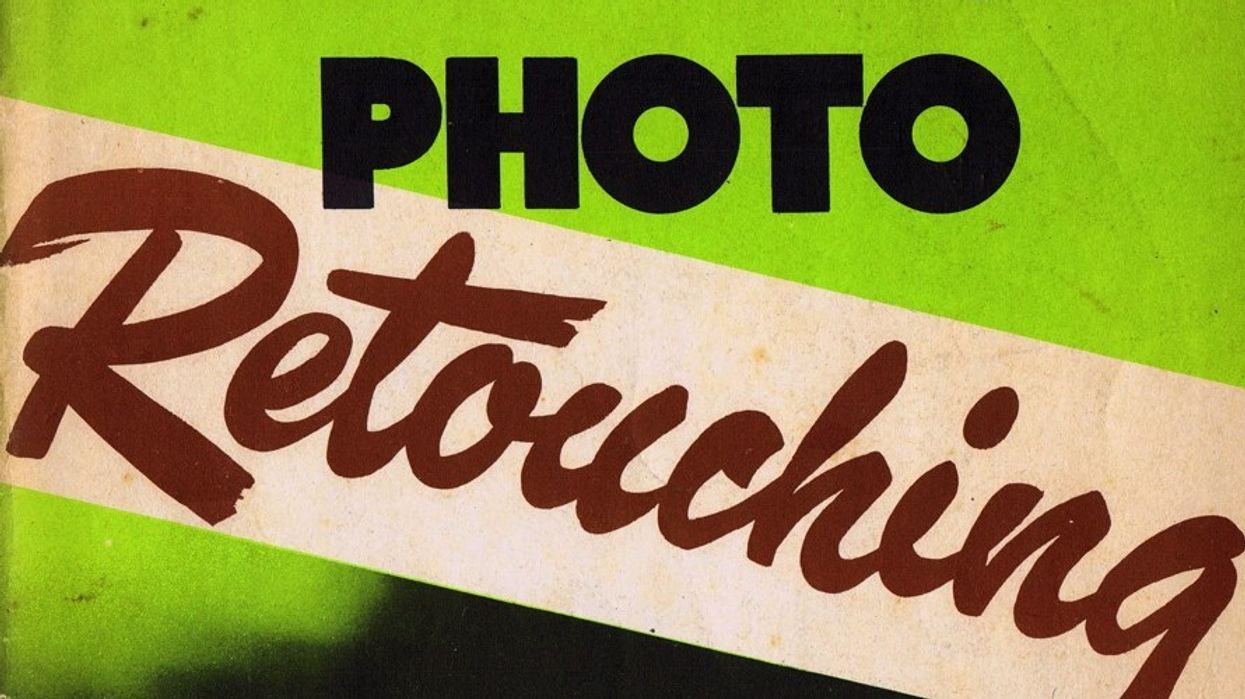Old School 'Photoshop' Techniques That Still Apply: Touching Up Celluloid Stills Circa 1946

Just as digital acquisition hasn't rendered the light meter obsolete, nor NLE software altered what makes a well-paced scene -- digital retouching plays by a lot of the same rules now as it always has. Recently, CreativePro dug up the fantastic-looking book Short Cuts to Photo Retouching, written by photographer Raymond Wardell in 1946. Wardell walks the reader through many techniques that will be familiar to Photoshop users -- except he's quite literally making his artistic alterations onto actual, physical film prints. Despite (or because of) this, the results are downright impressive -- especially given the lack of a real-life 'undo' command. Click through to check out a few scans from this old gem, from which we can still learn plenty.
This material comes us to from Creative Pro, via PetaPixel, uncovered by Gene Gable:
I recently came across a 1946 book on the art of photo retouching and it reminded me of those youthful days, though I had none of the skills evidenced by the author, Raymond Wardell. Here was a true illustrator and artist who could dramatically change a photograph using the simplest of tools and a steady hand. But what caught my eye was how similar the basics of photo retouching were in 1946 to what they are today. The tools have changed and we now work much more in color, but the reasons for tackling a retouching job are surprisingly consistent over the decades.
I think there's something very telling about the fact that a number of these stills look far better in their right-column versions than what could have been practically (or actually) achieved photographically. In many cases, creators mustn't sweat telling the truth, but instead focus more on getting the point across, conveying the meaning, or otherwise telling the story. In our visual medium -- in which something as basic as focal length or white balance (or film stock) choice constitute a very-deliberate 'representation' of the real world -- we often concern ourselves more with where we end up than how we got there. I think Mr. Wardell would agree that the story has to get told, whatever the cost, and the white lies of retouching, visual effects, 'Photoshopping,' and so on are simply tools are the trade.
I also think Mr. Wardell would agree that every tool of the trade must be placed to the proverbial page tastefully rather than heavy-handedly -- and this balance, I think, is key. Wardell's instruction and work here reminded me of traditional cinema matte painting, and for good reason. The filmmaker is an artist as much as he is a technician, a problem-solver, and a highly qualified story-telling tool of his or her own. The work of the matte painter evokes -- and more importantly literalizes -- the careful balance between art and function that every filmmaker must strike, and that's another thing these stills speak of to me. Especially in a world where '4K Photoshop' is a thing (as is RAW in motion, for that matter), many of the same principles at work in 1946 are still applicable today. I think Raymond Wardell's work here does nothing if not prove to us that, while the tools may have changed, many principles of the task remain the same.
Not to mention that these same principles, and the artists carrying them out, must've been damn impressive to see working directly upon a physical master. For more of that, be sure to check out the original post over at CreativePro.
Link: Scanning Around with Gene: The Old Way of Photo Retouching -- CreativePro
[via PetaPixel]















